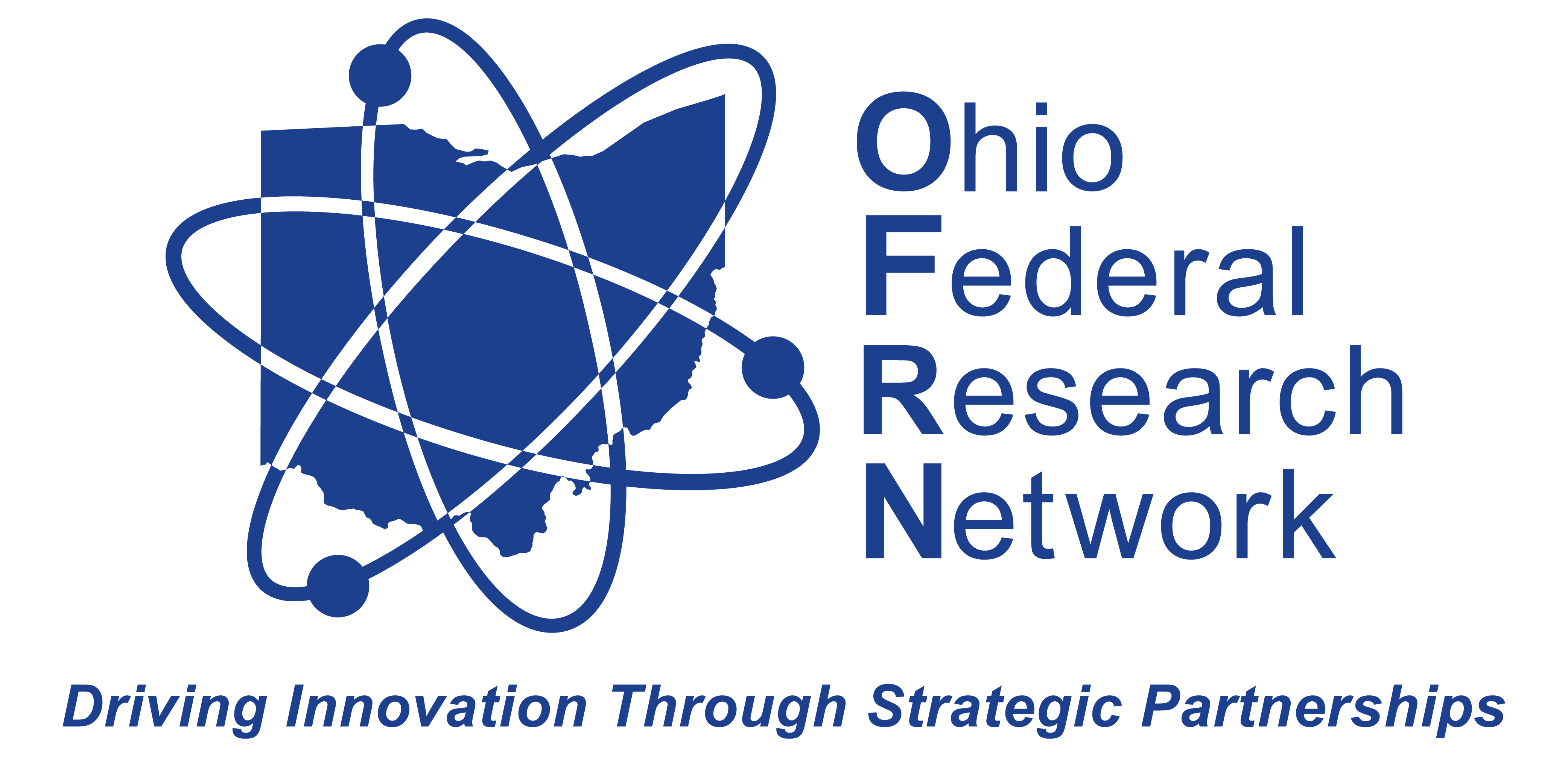The Ohio Federal Research Network Round 1 Centers of Excellence solicitation closed on November 30, 2016.
The OFRN Round 1 awardees and their research and development projects are:
- Wright State University, University of Toledo, Case Western Reserve University, University of Cinncinati, Orbita, Rubix, and Metro Health's “Regional UAS Live Virtual Contructive (LVC) Enterprise”
- Wright State University, University of Toledo, Air Force Institute of Technology, and Perfuco's "Sliding-Scale Autonomy Through Physiological Rhythm Evaluations (SAPHYRE)"
- Purdue, University of Toledo, Ohio University, Purdue, Akron Polymers, Orbital Research, Lucintech, EMS Adhesives, and UTC's "High Performance Plastic Substrates for Flexible Electronics"
- University of Toledo, The Ohio State University, Case Western Reserve University, RegenFix, Norman Noble, GE Aviation, and Lincoln Electric's "Adaptive Bio-Inspired Aerospace Structures Actuated by Shape Memory Alloys"
- Case Western Reserve University, University of Cinncinati, University of Toledo, Youngtown State University, Inorganic Product Partners, Lakeshore Cryotronics, Fenix Magnetics, Powdermet, and GE Aviation's "High Temperature Magnetic Materials"
- The Ohio State University, OSU, Purdue, and GE Aviation's "Hybrid Electric Propulsion and Power"
- The Ohio State University, Purdue, University of Dayton's Research Institute, Ford, ABB, Caterpillar, GE EPISCenter, AEP, GE Aviation, and UTRC's "Control Architecture for Intelligent Aviation Electric Power Systems"
- Purdue, The Ohio State Univeristy, University of Toledo, ph Matter, CAR Technologies, and Akron Polymer's "High Energy Density Li-Ion Battery Based on Advanced Silicon Anodes"
- University of Dayton, Case Western Reserve University, CRG, UES, and Xerion's "High Energy/Power, Long Cycle Life, Thermally Safe, Li-S Battery"
- Case Western Reserve University, University of Dayton Research Institute, Event38, CSA America, and CRG's "Hi-Performance Multifunctional Structural Energy Storage"
About Round 1
The Ohio Federal Research Network (OFRN) was provided start-up funding by the Ohio General Assembly in the fiscal year 2016-2017 state biennial operating budget which was signed into law by the Governor on July 1, 2015, as a strategic priority initiative of the Ohio Federal and Military Jobs Commission. With initial approval of the Commission, the OFRN, through its program Administrator, Wright State Applied Research Corporation, now Parallax Advanced Research, solicited white papers from designated university leads of OFRN Centers of Excellence (COE) to advance priority research thrust areas of Wright-Patterson Air Force Base and NASA Glenn Research Center to result in defined emerging mission support for the U.S. Air Force, Department of Defense and NASA while increasing research funding, talent, and capabilities in Ohio with an emphasis on creating and filling new jobs.
The OFRN marks a distinctly different approach to technology based economic development with a focus on aggregating and leveraging federal, academic, and private sector capabilities and resources in Ohio to develop proactive and innovative solutions to address emerging federal research requirements. The aim of the OFRN is to provide a solid return on investment to both the federal customer and the State of Ohio. The former benefits translational research advances to improve operator performance and mission success and the latter benefits the transition of research to Ohio defense and commercial enterprises that would create new products and fill new jobs.
This call, issued to lead universities in Ohio, designated as Centers of Excellence (COE), required being addressed by a collaborative research team that included at least one other Ohio-based university and one or more private sector companies that demonstrated an interest and commitment to advancing the state of R&D and to growing business operations and jobs in Ohio. The selection process was divided into two stages:
Phase 1: Interested parties submitted one integrated nine-page white paper that described the COE’s proposed organization structure and research priority focus areas to include a projected impact on advancing federal requirements and return on investment to Ohio in terms of economic impact and job creation. Research priority focus areas did not exceed six topics per COE. Each research topic that was proposed was required to have a sponsor/supporting Principle Investigator (PI) or Program Manager (PM) at NASA Glenn Research Center (GRC), Air Force Research Laboratory (AFRL) or National Air and Space Intelligence Center (NASIC). The OFRN encouraged the COE's to not only identify the "owner" of the federal research requirement they addressed but also to establish a working relationship with the federal PI(s) and PM(s) who augment and support the related research. The intent was to develop an impedance match inside and outside the fence that was key to success in the collaborative environment. Federal investigators/co-investigators or PMs were able participate in no more than three submissions.
Phase 2: Selected and approved White Papers resulted in invitations to submit full proposals that were due 45 days after the request for the proposal was issued. (The proposal instructions were provided as a part of the request for proposal but were based on the white paper outline). Proposals for individual projects were able to be for more than two years but had to have had a major deliverable at the end of the second year which would also serve as a decision tollgate on whether or not to fund a second phase (years three and beyond). This go/no go decision was made at the end of the second year. The number and sizes of the contracts awarded were determined by the amount of available funds and the number of high-quality proposals. The anticipated maximum funding level per COE for the proposed research projects and COE infrastructure support ranged $3 million to $5 million over the three year span.
Key Events & Dates
Opportunity Announcement Pre-Release | August 31, 2015 |
Due date for Round 1 White Paper | September 30, 2015 - 5pm ET |
Round 1 COE RFP Response Deadline for Proposal | November 30, 2016 - 5pm ET |
